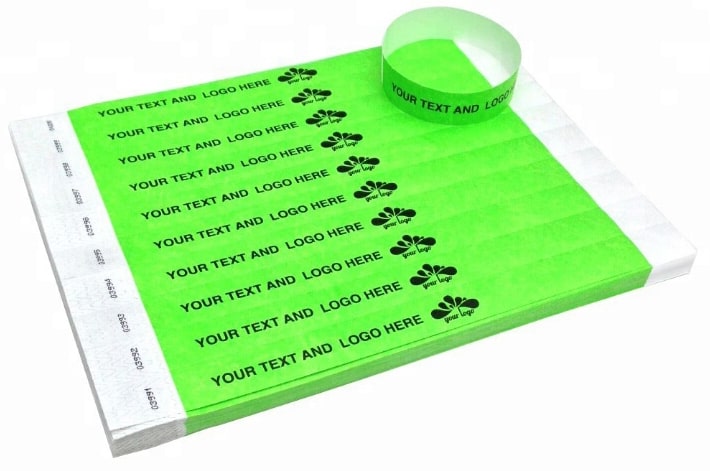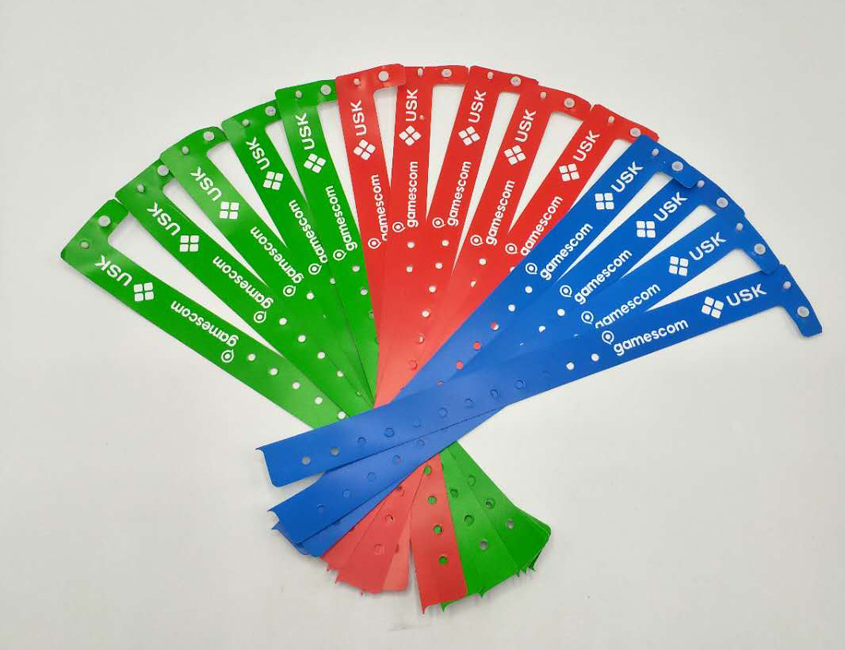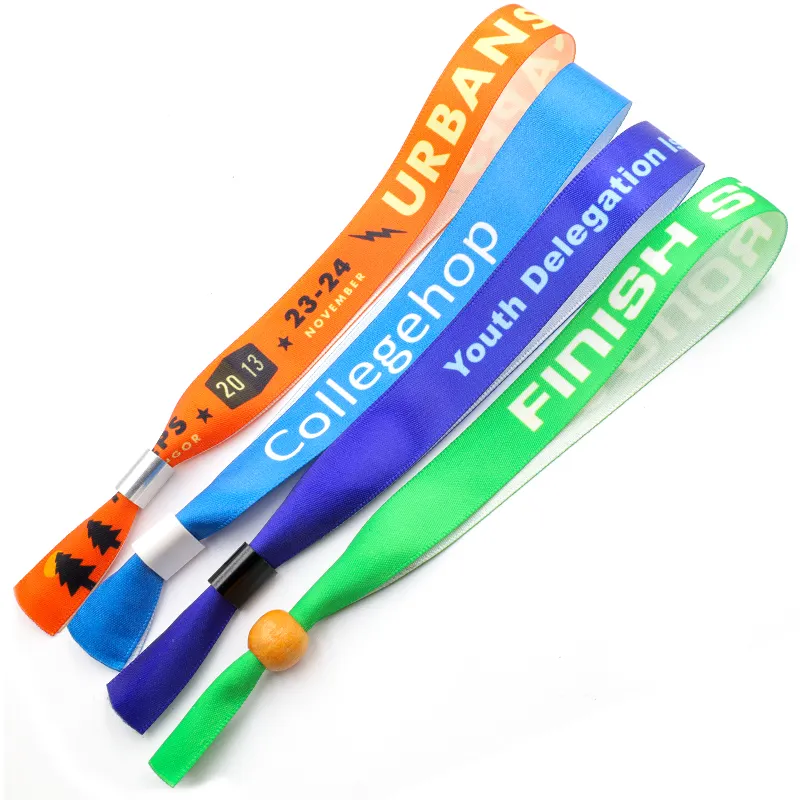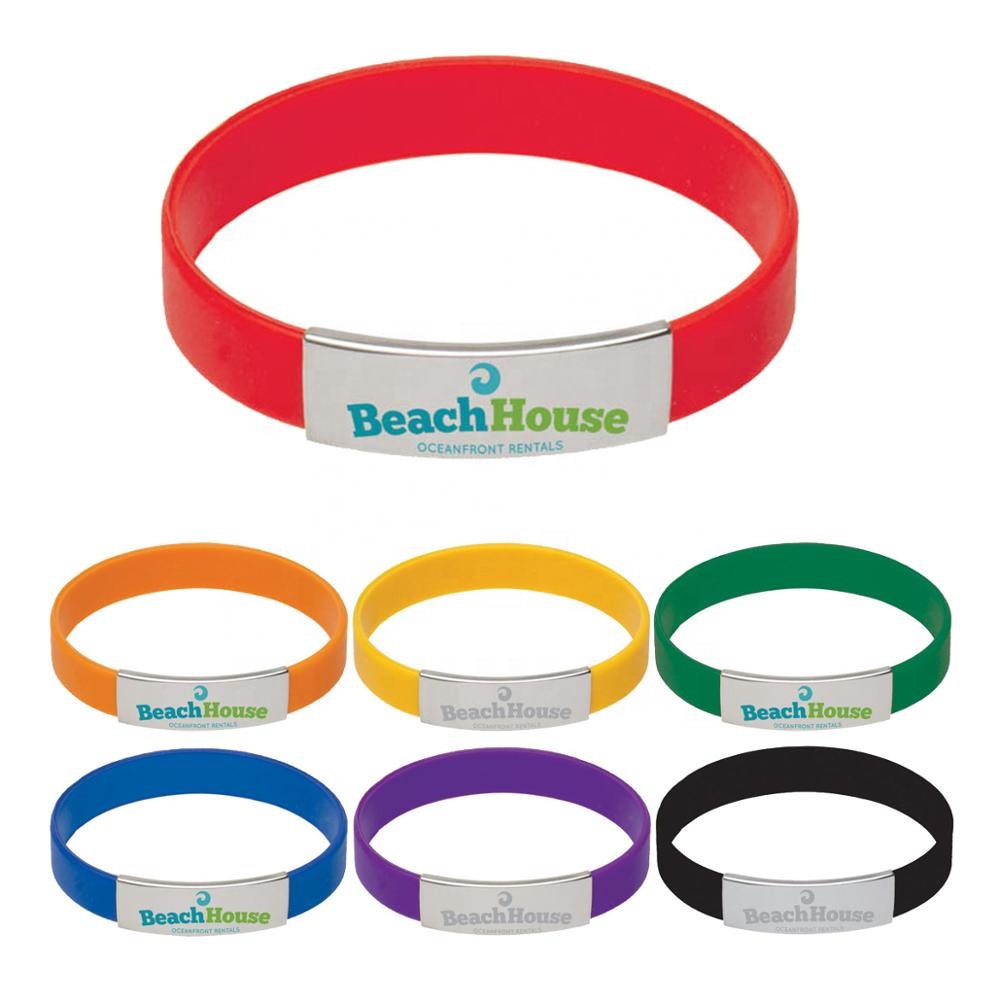
Organizing a fair, carnival, or similar large-scale community event is no small feat. The process brims with complexities–such as ensuring guest safety, controlling access, managing crowd flow, distinguishing between various tiers of access, and much more. Amidst these challenges, there’s a simple yet potent tool that event organizers worldwide are leveraging to streamline their operations and enhance the guest experience: the wristband.
Though seemingly inconspicuous, wristbands pack a punch when it comes to their utility at such events. Far from being just a fashion accessory, fair wristbands have emerged as a powerful solution to many of the challenges inherent to event organization. In this article, we’ll take an in-depth look at these and how they help enhance the festivities for both organizers and attendees.
What Are Fair Wristbands?
The concept of this type of wristband is straightforward yet ingenious. These bands, made from a variety of durable materials, are meant to be worn around the attendees’ wrists during the event. But far from being worn simply for style, these wristbands are meant to facilitate more efficient crowd management and ensure the event operations run smoothly.
Wristbands that are worn at fairs have evolved over the years to become a quintessential part of the event experience. Manufacturing companies now make them in a range of different materials that organizers can choose from depending on their budget and goals. Tyvek wristbands are the most common choice for fairs in many areas, but some organizations also opt for vinyl or plastic wristbands. Silicone alternatives such as debossed wristbands or imprinted wristbands are another popular option for promotional purposes, as attendees can continue wearing them as mementoes after the event has concluded.
Whatever these wristbands are made of, they’re generally designed to be both durable and comfortable, ensuring attendees can keep them on throughout the event without issue. Some wristbands can even be customized, sporting the event’s logo or colors, enhancing their appeal as a souvenir that attendees can take home as a keepsake of their experience. This simultaneous sentiments of practicality and sentimentality underscore the unique role that wristbands play in ensuring the success of community events.

What Can Fair Wristbands Be Used For?
Fairs and carnivals are typically large, well-attended events that involve numerous different activities. At gatherings like these, wristbands have a multitude of practical uses, including the following:
Access Control
At their most basic, these kinds of wristbands provide a simple yet effective method for staff to swiftly identify those who have paid for entry. Because they’re worn conspicuously on the wrist, these wristbands are easily visible, eliminating the need for attendees to fumble for tickets or digital QR codes. This expedites entry procedures, moves queues along efficiently, and contributes to a smoother, more enjoyable event experience for everyone involved.
For multi-day events or events where re-entry is allowed, wristbands are even more useful as crowd management tools. They eliminate the need for guests to hold onto and present tickets or passes every time they enter the event grounds, making the readmission process as hassle-free as possible.
Managing Entry to Age-Restricted Attractions and Activities
Many fairs and carnivals feature activities or areas with age restrictions, such as beer gardens or certain thrill rides. Rather than requiring guests to show their ID each time they wish to access these areas or participate in these activities, organizers can issue wristbands of different colors to minors and attendees of legal age. This provides an immediate visual indication of whether an attendee should be allowed access to certain attractions. This not only streamlines operations but also enhances the guest experience by reducing unnecessary interruptions.
Marketing and Promotions
These wristbands can be customized with the logos, colors, or messages from event sponsors or the host organization, serving as promotional tools throughout the event. They often become keepsakes that attendees keep long after the event is over, providing a lasting reminder of their experience and the brands that made it possible.
Benefits of Using Fair Wristbands for Events
Many organizations that run large events prefer to use wristbands over other access tools like traditional paper tickets or QR codes, and for good reason. Wristbands made for fairs offer organizers the following significant advantages:
Enhanced Security
Unlike paper tickets, which can be easily transferred, lost, or even duplicated, wristbands are non-transferable and often feature tamper-proof adhesive or snap closures, making unauthorized sharing or selling difficult. This increased security not only ensures fair entry for all attendees, but also helps in preventing revenue loss that could occur due to fraudulent practices.
More Efficient Queue Management
As mentioned above, the high visibility and quick verification that these wristbands provide can speed up the entry process significantly. Staff will no longer have to waste time waiting for attendees to produce their tickets or scrutinizing each ticket carefully, as a glance at a wristband can provide all the necessary information. This quick check reduces long lines and waiting times, making the entry experience more pleasant for attendees and less stressful for staff.
Higher Durability
These types of wristbands are typically made from sturdy materials like Tyvek, plastic, vinyl, or fabric, all of which are highly resistant to water damage, wear, and tear. This ensures that they last throughout the event, even in adverse conditions.

Types of Fair Wristbands
Event organizers can choose from a wide array of different materials for their wristbands. Which material is most appropriate will usually depend on the event’s duration, the organization’s budget, and their desired level of security. Here are some of the most common materials used:
Tyvek – Tyvek wristbands are made of high-density polyethylene fibers, making them tear-resistant and water-proof, ideal for single-day events. They are economical and often feature adhesive closures that visibly show any tampering attempts, enhancing the security of the event.
Plastic or vinyl – For multi-day events, plastic or vinyl wristbands may be more appropriate. These materials are incredibly durable and resistant to stretching or tearing. Vinyl wristbands can even include re-locking snaps for added security. Both types can also feature additional customization options like full-color graphics, holograms, or even pull-off tabs for food or drink redemptions.
Fabric – Fabric wristbands are another popular choice, particularly for festivals or high-profile events where comfort and aesthetics are paramount. These wristbands are soft, comfortable for long-term wear, and can be customized with woven or printed designs. Many even feature a locking clasp to prevent removal, ensuring they remain on the attendee’s wrist for the duration of the event.
Silicone – Silicone wristbands offer a distinct advantage when it comes to promotional or fundraising efforts. They can be embossed or debossed with logos or messages and are available in a variety of colors. Attendees often hold on to these wristbands long after the event, providing a lasting symbol of their participation and extending the event’s brand presence.
If your organization is working on putting together a carnival, fair, or festival, Wristband Creation is your best choice for customized bracelets that suit your goals and budgetary constraints. Simply visit us online or give us a call today and we’ll gladly help you pull off your event without a hitch!







